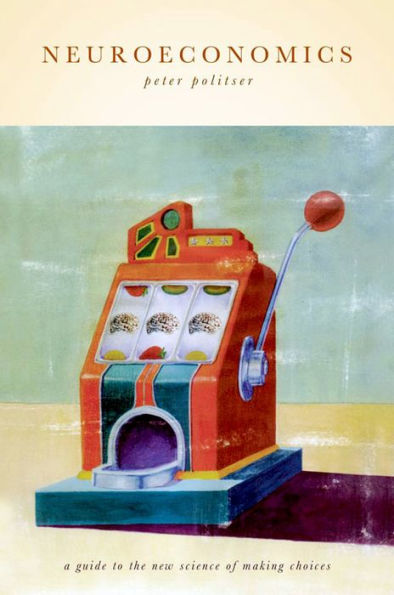Neuroeconomics: A Guide to the New Science of Making Choices
As technology has opened new windows into the brain, it has clarified what happens there when people make decisions about money. This clarity has produced a new science called neuroeconomics, which addresses diverse questions, such as why people save, buy stocks, steal, and overspend. The many different methods used in neuroeconomics have, however, often yielded unclear findings about the quality of these decisions, primarily because the field has lacked both guidelines for categorizing the different aspects of quality, and guidelines for selecting methods to study these aspects. Before this book, in which Peter Politser guides the reader through the different regions of study, there was no scientific guide for those interested in neuroeconomics. Politser shows how to evaluate specific elements of choice, such as regret, expectation, risk, ambiguity, time preference, and learning, and surveys economic and behavioral models of decision making skills. He reviews the neural correlates of decisional impairments and inconsistenciesclarifying, for example, why we do not recall what we experience, experience what we expect, or like what we want, and provides detailed tables of decision-making skills, their neural correlates, and possible impairments. Politser also considers what the field of neuroeconomics may add to future conceptions of decision making, and outlines the limitations of various studies of different capacities. He then introduces a broader field for the design and interpretation of neuroeconomic studiesa neuroepidemiology of decision making. Everyone who wants to understand the research in neuroeconomics or use its methods should read this book. Its accessible text, along with an extensive glossary, will guide those with little economic or neuroscience background, and make the book an excellent supplement for courses on neuroscience and decision making.
1113065768
Neuroeconomics: A Guide to the New Science of Making Choices
As technology has opened new windows into the brain, it has clarified what happens there when people make decisions about money. This clarity has produced a new science called neuroeconomics, which addresses diverse questions, such as why people save, buy stocks, steal, and overspend. The many different methods used in neuroeconomics have, however, often yielded unclear findings about the quality of these decisions, primarily because the field has lacked both guidelines for categorizing the different aspects of quality, and guidelines for selecting methods to study these aspects. Before this book, in which Peter Politser guides the reader through the different regions of study, there was no scientific guide for those interested in neuroeconomics. Politser shows how to evaluate specific elements of choice, such as regret, expectation, risk, ambiguity, time preference, and learning, and surveys economic and behavioral models of decision making skills. He reviews the neural correlates of decisional impairments and inconsistenciesclarifying, for example, why we do not recall what we experience, experience what we expect, or like what we want, and provides detailed tables of decision-making skills, their neural correlates, and possible impairments. Politser also considers what the field of neuroeconomics may add to future conceptions of decision making, and outlines the limitations of various studies of different capacities. He then introduces a broader field for the design and interpretation of neuroeconomic studiesa neuroepidemiology of decision making. Everyone who wants to understand the research in neuroeconomics or use its methods should read this book. Its accessible text, along with an extensive glossary, will guide those with little economic or neuroscience background, and make the book an excellent supplement for courses on neuroscience and decision making.
48.99
In Stock
5
1

Neuroeconomics: A Guide to the New Science of Making Choices

Neuroeconomics: A Guide to the New Science of Making Choices
Related collections and offers
48.99
In Stock

Product Details
| ISBN-13: | 9780190294229 |
|---|---|
| Publisher: | Oxford University Press |
| Publication date: | 03/12/2008 |
| Sold by: | Barnes & Noble |
| Format: | eBook |
| File size: | 2 MB |
From the B&N Reads Blog
